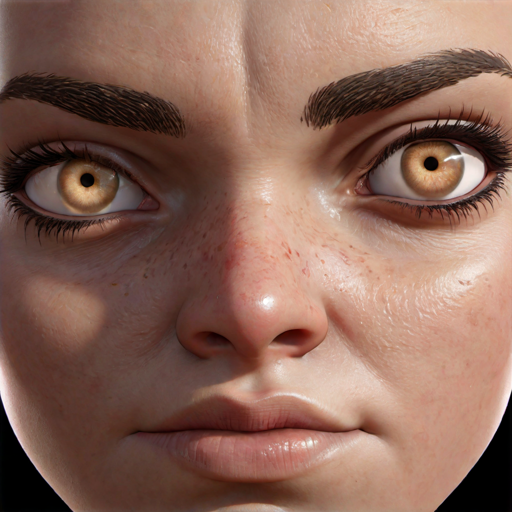
In Turkey, the phrase “Milia” is also widely used as “Milialar.” It describes the tiny, pearl-like cysts that frequently develop on the skin surrounding the eyes, especially the eyelids. Even though these little lumps are usually benign, their presence might cause anxiety. Keep in mind that milialar acne is distinct from other forms of skin condition. We shall examine the realm of milialar, also known as milia, in this thorough guide, looking at its kinds, progression, indications, symptoms, precautions, and available treatments. You may be sure you have a complete grasp of milia because the material is based on an in-depth scientific study and professional perspectives on the illness.
Milia or Milialar: what is it?
Milialars are tiny, pinhead-sized, dome-shaped bumps that usually range in size from 1-2 millimeters. On the skin’s surface, they resemble solid, smooth, pearly, whitish-yellow cysts. Milia most frequently appear on the eyelid and in the area under the eyes, where they resemble microscopic pearls buried in the skin. Research claims that milialar happens when keratin, a protein present in skin, hair, and nails, becomes trapped under the skin’s outer layer. Although they are frequently observed in infants, milia can also form in adults, usually as a consequence of skin injury.
Varieties of Milialar, or Milia
Primary Milialar
When keratin becomes caught in the skin, it immediately produces pediatric milialar. Because of their underdeveloped sweat ducts, newborns are more likely to have them. Important characteristics of primary milia, also known as milialar, consist of:
Facial areas such as the nose, cheeks, and eye region can often be seen with small, symptomless cysts that range in color from yellow to white. Typically, this clears up on its own within a few weeks or months for babies.
Secondary Milialar
Conversely, secondary milia develop as a consequence of skin damage or injury. Adults may have the following specific skin surgeries or disorders:. Important traits of milialar, or secondary milia consist of:
Often seen in areas impacted by trauma or surgery, it resembles primary milialar in appearance. Some symptoms, such as burn pain, may be related to the underlying cause.
Neonatal Milialar
During the first few weeks of life, a baby may develop these little white lumps on their nose and face. Milialar in newborns are benign and typically go away on their own.
Milialar in Plaque
This kind of milia appears as a collection of milia on a skin area that is irritated. It is an uncommon ailment that might be linked to further skin conditions.
Multiple eruptive Milialar
Itchy patches that might occur on the face, upper arms, or chest are characteristic of this form of milia. The cysts may take several weeks to several months to manifest.
Traumatic Milialar
Where there has been skin damage, these cysts develop. Rashes and serious burns are two examples. The cysts may become inflamed, turning white in the middle and red around the margins.
Milialar associated with products
The skin where steroid cream is administered may develop milia from using it. This side effect is uncommon, though. Certain elements included in cosmetics and skin care items might give certain people milia. The following components should be avoided if your skin is prone to milia:
paraffin in liquid form
petroleum liquid
paraffin wax
liquid paraffin
petroleum-based liquid
fossil fuels
All of these mineral oil kinds have the potential to induce milia. Additionally, lanolin may promote the growth of milia.
What Causes Milialar?
Comprehending the fundamental reasons for milialar is vital for efficient handling. The following are the main causes of the production of milia.
Skincare Products
Using thick, occlusive skincare products can trap sebum and dead skin cells, which can cause miliarial lesions to appear. Keep an eye out for goods that contain comedogenic substances.
Sun Damage
Extended sun exposure can cause skin thickening and hinder the normal shedding of dead skin cells, which raises the risk of milialar.
Trauma to the Skin
Severe burns, physical trauma, or aggressive skin care procedures can result in the formation of secondary milia at the site of damage.
Genetics
Some people may be more likely to acquire these cysts due to a hereditary susceptibility to milia.
Controlling and Avoiding Milialar
Although milia are usually benign and don’t need to be treated, some people may want to control or avoid them for aesthetic purposes. Here are a few guidelines. To reduce the likelihood of getting milia and remove dead skin cells, gently exfoliate your skin regularly. But be careful not to irritate the skin too much, since this can make the issue worse.
Steer clear of heavy products.
To reduce the chance of entangling dead skin cells, use lightweight, non-comedogenic skincare products.
Sun Protection
Use sunscreen regularly to shield your skin from UV radiation, which can hasten the creation of wrinkles.
Expert Extraction
See a dermatologist if your milia concerns you or if they continue. With sterile tools, they can safely remove the cysts. Certain topical therapies that include retinoids may encourage the turnover of skin cells, thereby preventing milia. Get dermatological advice before using them.
Skincare Advice to Stop the Formation of Milia
Utilize Non-Comedogenic Products
Seek out skincare and cosmetics items bearing the “non-comedogenic” designation. Because of their pore-clearing nature, these products are less likely to aggravate milia.
Select Lightweight Moisturizers:
To prevent excessive oil buildup on the skin, use moisturizers that are lightweight and oil-free. Moisturizers that are gel- or water-based are frequently good options.
Expert Interventions for Mililar
Dermatologist Consultation
See a dermatologist if you have troublesome or chronic milia. They can correctly identify the kind of milialar and provide suitable courses of action.
Extraction
Dermatologists can use sterile equipment to safely extract milialar. This is a short and mostly painless treatment.
Topical Retinoids
To aid in promoting skin cell turnover and preventing milia, doctors may occasionally recommend topical retinoid treatments.
Chemical Peels
A dermatologist’s chemical peels can help exfoliate the skin and prevent the growth of milia.
Lifestyle and nutritional factors to consider
Hydration
If you want glowing skin, you must drink enough water. Make it a habit to drink enough water daily so that your skin stays hydrated all over.
Balanced Diet
Your skin can benefit from a diet high in fruits, vegetables, and antioxidants. Overindulgence in high-glycemic meals may aggravate skin conditions.
Avoid Picking or Squeezing
Refrain from picking or squeezing milia as this may aggravate the condition and cause skin irritation.
Control your tension
Excessive tension might harm the condition of your skin. To enhance general well-being, partake in stress-relieving activities like yoga, meditation, or physical activity.
Conclusion
In conclusion, milialars may be little, but for those who desire clear, smooth skin, they can be a major worry. For efficient treatment and prevention, it is essential to comprehend the forms and causes of milialar.
Though there are precautions you may take to lessen your chance of developing milia, you should always see a dermatologist for specific guidance and treatment if necessary. You may have healthy, glowing skin and prevent those pearly-white pimples with the right treatment.
FAQ
How does Milialar appear?
Milia shows up on the skin as tiny, flesh-colored, or white pimples. They are frequently confused with whiteheads.
Are Milialar able to go on their own?
Sometimes Milialar can go away on their own, but it’s preferable to get help if they continue or disturb you.
Does Milialar hurt?
Milia usually doesn’t hurt. Rather than being an uncomfortable source, they are more of a cosmetic problem.
Can Milia be acquired by adults?
Indeed, Milia may have an impact on people of all ages, including adults.
Do any risk factors exist connected to Milia?
Although Milialar may affect everyone, people with specific skin types and those who use a lot of skincare products are more likely to experience it.






